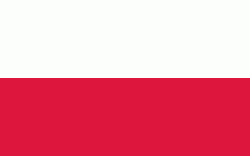Zakopane
 |
Zakopane lies near Poland's border with Slovakia, in a valley between the Tatra Mountains and Gubałówka Hill. It can be reached by train or bus from the provincial capital, Kraków, about two hours away. Zakopane lies 800–1,000 metres above sea level and centres on the intersection of its Krupówki and Kościuszko Streets.
The earliest documents mentioning Zakopane date to the 17th century, describing a glade called Zakopisko. In 1676, it was a village of 43 inhabitants. In 1818, Zakopane was a small town that was still being developed. There were only 340 homes that held 445 families. The population of Zakopane at that time was 1,805: 934 women and 871 men. The first church was built in 1847, by Józef Stolarczyk.
Zakopane became a center for the region's mining and metallurgy industries; by the 19th century, it was the largest center for metallurgy in the region of Galicia. It expanded during the 19th century as the climate attracted more inhabitants. By 1889, it had developed from a small village into a climatic health resort. Rail services to Zakopane began on October 1, 1899. In the late 1800s, Zakopane constructed a road that went to the town of Nowy Targ and had railways that came from Chabówka. Because of easier transportation, the population of Zakopane had increased to about 3,000 people by the end of the 1800s. In the 19th century, Krupówki Street was just a narrow beaten path that was meant for people to get from the central part of town to the village of Kuźnice.
The ski jump on Wielka Krokiew was opened in 1925. The cable car to Kasprowy Wierch was completed in 1936. The funicular connected Zakopane and the top of Gubałówka in 1938.
Because of Zakopane's popular ski mountains, the town gained popularity which made the number of tourists increase to about 60,000 people by 1930.
During the joint German-Soviet invasion of Poland, which started World War II in September 1939, the town was invaded by Germany, and the Einsatzgruppe I entered the town on September 4, 1939, to commit various crimes against Poles. In March 1940, representatives of the Soviet NKVD and the Nazi Gestapo met for one week in Zakopane's Villa Tadeusz, to coordinate the pacification of resistance in Poland. Throughout World War II, Zakopane served as an underground staging point between Poland and Hungary.
From 1942 to 1943, 1,000 prisoners from the German Kraków-Płaszów concentration camp were set to work in a stone quarry. In 1944, during the Warsaw Uprising, the Germans deported thousands of Varsovians from the Dulag 121 camp in Pruszków, where they were initially imprisoned, to Zakopane. Those Poles were mainly old people, ill people and women with children. In mid-October 1944, there were 3,800 registered Poles, who were expelled from Warsaw, and probably another 3,800 unregistered expellees. In January 1945, the Germans retreated from Zakopane and the German occupation ended.
Map - Zakopane
Map
Country - Poland
 |
 |
| Flag of Poland | |
Poland has a temperate transitional climate and its territory traverses the Central European Plain, extending from Baltic Sea in the north to Sudeten and Carpathian Mountains in the south. The longest Polish river is the Vistula, and Poland's highest point is Mount Rysy, situated in the Tatra mountain range of the Carpathians. The country is bordered by Lithuania and Russia to the northeast, Belarus and Ukraine to the east, Slovakia and the Czech Republic to the south, and Germany to the west. It also shares maritime boundaries with Denmark and Sweden.
Currency / Language
| ISO | Currency | Symbol | Significant figures |
|---|---|---|---|
| PLN | Polish złoty | zÅ‚ | 2 |
| ISO | Language |
|---|---|
| PL | Polish language |
















